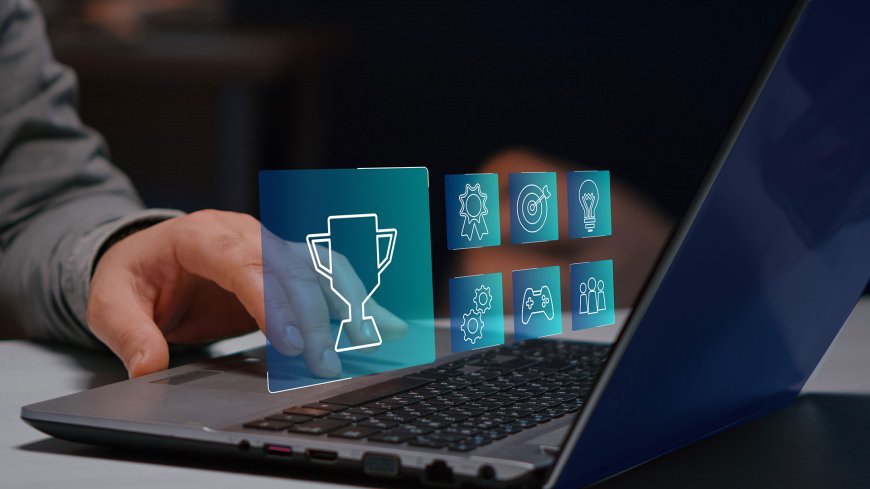Game-Based Learning and Gamification in Education
Discover how game-based learning and modern gamification are transforming education in 2025–2026 with AI, AR/VR, microlearning and personalized learning paths.

Keeping the spark of curiosity alive in a classroom…
Ensuring employees truly engage with corporate training…
Or inspiring an adult to “start learning again”…
These outcomes no longer happen through good explanations, the right content, or a polished presentation alone.
In 2025, the most powerful ally of the learning world is game-based learning experiences and modern gamification models.
Our first article on “Game-Based Learning and Gamification in Education,” published on EdTech Türkiye in 2024, drew a great deal of attention. But since then, both technology and learner behavior have evolved rapidly. This updated and extended article explores today’s emerging game design approaches, AI-powered learning experiences, rising trends in corporate training, and examples from Turkey.
Why Games? Because Interaction Is the Natural Language of Learning
Across every age group, learning level, and industry, one thing is clear:
People learn faster when they interact, make choices, and receive instant feedback.
Here’s why games are so effective:
-
The brain’s reward mechanism is triggered through micro-successes inside a game.
-
Repetition and trial-and-error strengthen retention.
-
Learners stay more engaged when they feel in control.
-
Story-driven experiences turn abstract concepts into something tangible.
It’s no coincidence that the game-based learning market has surpassed $20 billion — people want to participate, not passively consume.
Gamification Is No Longer Just Points and Badges
There was a time when gamification meant the classic trio: points – badges – leaderboards.
In 2025, this approach feels almost nostalgic.
Modern gamification now includes:
-
Behavior-driven analytics,
-
Dynamic difficulty adjustment,
-
Adaptive content recommendations,
-
Emotion-aware feedback,
-
Personalized side quests and micro-learning missions.
It’s no longer about “making it feel like a game”; it’s about guiding the learner’s mind the way a game designer guides the player’s journey.
AI Is Taking Gamification to an Entirely New Level
In the past two years, the biggest transformation has been the integration of AI-driven learning flows.
AI is no longer just generating content — it is actively shaping the learning journey.
How?
-
Creating new micro-tasks based on the learner’s mistakes,
-
Rewriting outcomes dynamically in leadership scenarios,
-
Suggesting personalized development paths,
-
Ensuring no two learners ever experience a game the same way.
This shift is leading both schools and organizations away from static content toward dynamic learning journeys.
AR/VR: The New Stage of Learning Through Digital Experience
Augmented Reality (AR) and Virtual Reality (VR) are no longer niche technologies.
They are part of real classrooms, real workplaces, and real problem-solving processes.
What can learners experience today with AR/VR?
-
Mini-games for factory safety,
-
Customer interaction simulations in banking,
-
Digital surgical scenarios in medicine,
-
AR-guided workflows for field workers,
-
History and geography experiences where learners step directly into the environment.
Learners no longer “read” — they experience.
Mobile Games: The Most Natural Form of Microlearning
Thanks to mobile devices, gamification now fits into everyday moments:
-
A 3-minute task,
-
A 5-question daily challenge,
-
A quick matching game during a walk,
-
A short quiz to reinforce new knowledge.
Short, fast, low-effort learning loops are especially impactful in corporate training.
Global Examples (2025 Perspective)
Duolingo’s multi-layered gamification system
XP leagues, side quests, AI-powered speaking practice, personalized reminders.
Kahoot!’s next-generation mini-games
Not just quizzes — team battles, timed missions, and boss-fight modes.
Minecraft Education’s multi-disciplinary approach
Integrated missions for sustainability, physics, coding, and history.
Gamified corporate simulations
Scenario-based workflows in banking, retail, production, and customer service.
Gamification in Turkey: A Quiet but Powerful Rise
In Turkey, both schools and organizations are adopting gamification more intentionally:
-
In-class mini economy systems,
-
Behavior-based reward models,
-
Gamified corporate onboarding journeys,
-
Interactive missions in sustainability programs,
-
Personalized learning paths offered by platforms like MediaRubic & TestEd.
There is clear momentum — educators are learning not only technology, but also game design thinking.
7 Golden Principles of Effective Gamification
These principles summarize the most widely adopted global approaches in 2025:
-
Start with a clear learning objective.
-
Match game mechanics with that objective.
-
Provide micro-success loops for motivation.
-
Use storytelling.
-
Build a gentle difficulty curve.
-
Add social competition or collaboration.
-
Measure, improve, measure again.
This framework significantly increases engagement in both academic and corporate settings.
The Future of Game-Based Learning: What Will Change Toward 2026?
-
Fully personalized AI-driven learning adventures,
-
Emotion-based adaptive feedback,
-
AR-enhanced classroom missions,
-
Gamified tracking of corporate KPIs,
-
Metaverse-like simulation classrooms,
-
Hybrid microlearning + gamification models,
-
Social learning communities enhanced with game mechanics.
In short, as technology evolves, games are no longer optional — they are becoming a core component of modern learning strategy.
Final Thoughts: Learning Is Changing — Are You Ready?
Game-based learning is no longer just a fun experience for children.
It is now a powerful learning model across universities, corporate L&D, and professional development.
For instructional designers, teachers, L&D teams, and leaders, the real question is:
“How can we integrate these models into our own learning experiences?”
The answer is simple: Start small, experiment, measure, refine.
Learning has always been a journey — gamification simply makes that journey more engaging, more motivating, and more memorable.
If you’d like to revisit the foundations of this topic, here’s our original article: